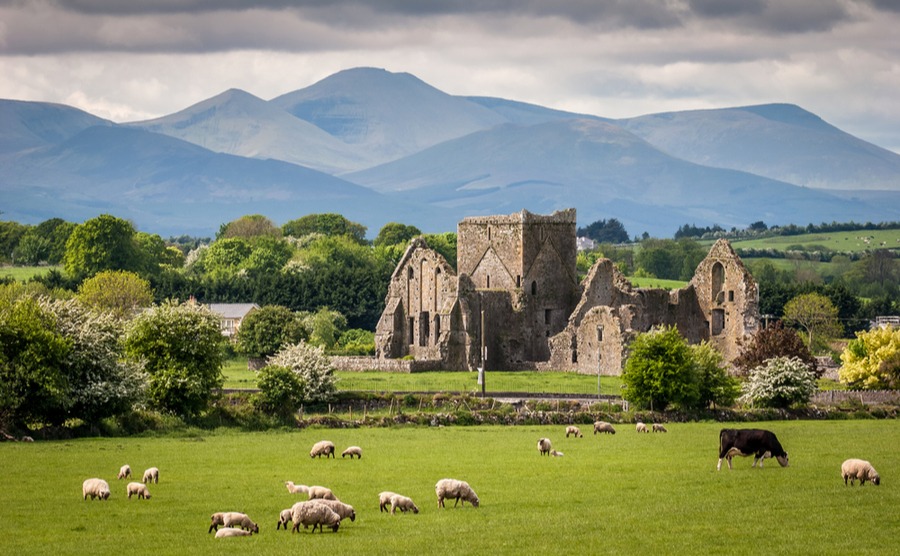Ireland has had a total of 25,111 cases of coronavirus, and has successfully flattened the curve. Today, we’re providing an update on how Ireland is coping and providing more detail on what a move to Phase 2, currently scheduled for June 8th, means for the nation.
What is the current situation in Ireland?
Ireland is currently in Phase 1 of the government’s five-stage roadmap for reopening. The country entered this phase on May 18th, and it saw construction workers, gardeners, and those that work outside allowed to return to work and meetings of up to four people from different households permitted in outdoor spaces. Additionally, certain retail outlets have been allowed to open, including garden centres, hardware stores, and stationery and IT equipment stores. Also, schools and colleges have reopened to teachers to allow them to begin preparing for the students to return. Social distancing, strict hygiene standards and working from home (where possible) are all advised.
How much would your budget get you in euros? Get a free, no-obligation quote from Smart Currency Exchange today.

Ireland is moving into phase 2 of lockdowns.
What does Phase 2 involve?
All going to plan, Ireland is set to move to Phase 2 of reopening on Monday 8th June. In an email to Fine Gael members, Leo Varadkar stated that:
“The Cabinet will meet on Friday (5th June) to decide whether it is safe to move to Phase Two. I am confident that it will be. As I have always said, our plan to re-open the country can be accelerated if it safe to do so. But, I want to be confident that it is safe before making that move. I am concerned that many are calling for us to speed up before we even know for sure what impact the Phase One lifting of restrictions has had on the spread of the disease. I think it is better to adopt this slow and steady approach than to go too fast and risk falling backwards.”
Ireland is set to move to Phrase 2 of reopening on Monday 8th June.
Under Phase 2, household visits will be permitted and public libraries will reopen. Also, businesses and small retail outlets will be allowed to open, as long as social distancing is observed and close consideration is paid to the safety of staff and customers. At present, there is a 5km travel restriction in place. Under Phase 2, this will be increased to 20km.
And moving forwards?
If numbers stay low, the next phase of reopening will happen on June 29th. Under Phase 3, non-essential retail outlets can reopen as long as they have street-level entrances and exits. Those with low-levels of interaction will be permitted to return to the workplace – although avoiding public transport where possible is advised. Playgrounds will reopen, small social gatherings will be permitted and creches and pre-schools will open for children of key workers in a phased manner. Furthermore, restaurants and cafés will reopen, but “must comply with social distancing and strict cleaning protocols”.
Phase 4 is scheduled for 20th July. In this phase, hotels will reopen, but their bars must stay closed. All people who cannot work from home will return to work and creches and pre-schools will open for all children, but again this will be managed on a gradual basis. Also, galleries, museums and places of worship will be able to open their doors. Under Phase 4, people will finally be able to travel outside of their region.
Could it be a buyer’s market in the future? Make sure you get the most out of your money with the tips and tricks in our Negotiation Guide.
The final stage of the plan is set to come into force on August 10th, when workers across all sectors can return to work, larger social gatherings will be allowed, and there will be an easing of restrictions on high-risk retail services. Furthermore, primary, secondary and third-level educational institutions will reopen on a phased basis.
Has the Irish property market been affected?
A study conducted by Beagel, an Irish property start-up, has investigated the impact of COVID-19 on the Irish property market. When considering the number of bids per property, unsurprisingly the number fell dramatically by 86 percent from 9.9 bids per property in January 2020, to just 1.3 bids in April 2020 as lockdown measures took hold. The study also considered average sale prices. In January 2020, the average property sold for 3.6 percent over the asking price. This crept up to 5.3 percent in February 2020, but as of April 2020, the average property sold for 3.4 percent under the asking price. Finally, the report investigated the average time Irish property is on the market. In January 2020, the average property sold after 68.9 days on the market. As of April 2020, the average sale period was 76 days.
To start planning your move now, make sure to download your free Property Buyer’s Guide to Currency below, and, if you have any further questions, call our friendly Resource Centre for free guidance on +44(0) 7898 0549 or email [email protected].

The Property Buyer’s Guide to Currency will help you:








